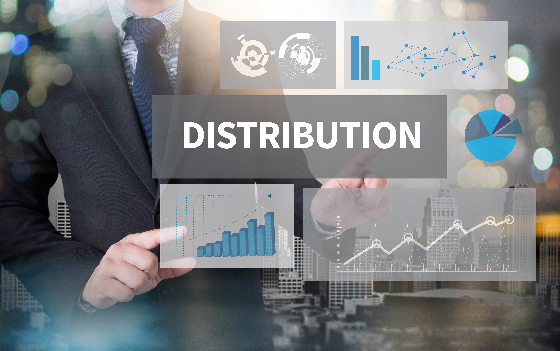The International Trade Blog International Sales & Marketing
How to Set Your International Distributors up for Long-Term Success
On: January 12, 2022 | By:  Alberto Rodriguez-Baez |
5 min. read
Alberto Rodriguez-Baez |
5 min. read

The days, weeks and months immediately after signing a new international distributor are crucial for the distributor’s long-term success. One piece of advice I always share with clients regarding new distributors is this: You must be ready to guide them and help them hit the ground running from day one to launch the brand, start making sales and gain market share as soon as possible.
So, what can you do to help a new distributor have the best chance for success in the short term and build a solid foundation for long-term success?
Here are three practices I personally use to help new international distributors succeed and stay in our distribution network for the long term:
- Onboarding
- Training
- Communication
1. Onboarding
Spending time upfront with your new international distributor, helping them ease into your distribution network, making them feel welcome, setting up expectations about collaboration, and “showing them the ropes” will make a tremendous difference in the distributor’s confidence and performance.
Here is the simple onboarding schedule that I use and that some of my clients have modified to onboard and help their new international distributors get ready to launch a brand in their respective countries:
Week 1
- Send a formal “Welcome to the Family” email to the distributor.
- Send an email to your distribution network announcing the new distributor (copy the new distributor). If you don’t have international distributors, send this email to your staff and/or domestic distribution network.
- Send your new distributor a certificate of distributorship. These are examples: APG, Enerpac, Mincon.
- Send them a schedule of activities for the following weeks (see below). It is important that they know what to expect regarding upcoming onboarding activities.
Week 2
- Send your new distributor promotional materials. I used to send a box with company-branded t-shirts, polo shirts, hats, pens, etc.
- Send them the International Distributor Training Manuals (see next section). Ask the distributor to start reviewing them at their leisure and note any questions for later review.
- Set appointments for sales, marketing and other training sessions.
Week 3
- Set up a website account(s) for the distributor.
- Include the distributor’s information on the distributor locator page on your website.
- Ask them to review product lines and select models for the first order.
Week 4
- Start conducting training sessions. Make sure the distributor is using the International Distributor Training Manuals.
- Some key items to accomplish by now are:
- Help your distributor prepare a promotional schedule.
- Show them how to order products and how to plan their first order.
- Plan the brand’s launch.
2. Training
A common mistake I’ve seen exporters make is assuming that new international distributors know how to launch the brand, gain market share and grow sales year after year. Offering training is not only a critical element for success, but it can also be a source of competitive advantage for your company.
In my experience, I have found that most exporters are not ready to offer training to new distributors. However, developing a training program is not difficult. Most of the time, exporters and their teams have the information needed to create a distributor training program—this knowledge just has not yet been documented.
At a company I used to work for, there wasn’t a training program available for new distributors. I identified five training areas that would be valuable for new distributors. Next, I interviewed people in our company that worked in those areas. Finally, I documented the information and compiled it into one training manual. The result was a formal training program that covered the following critical areas:
- Administrative Duties
- Product Knowledge
- Marketing
- Sales
- Installation and Maintenance
Each section covered the following items:
1. Administrative Duties
- Placing orders
- Claiming warranties
- Requesting replacement parts
- Requesting promotional materials
- Buying gear for the staff
- Buying accessories for the store
2. Product Knowledge
- Catalog review
- Product lines
- Product models
- Safety features
- Best-selling products
3. Marketing
- Recommended promotional channels
- Promotional activities
- Developing a promotional calendar
- Store soft opening
- Store grand opening
- Advertising materials and other promotional resources
4. Sales
- Interacting with clients
- Product presentation
- Proper follow-up
- After-sale service
- Obtaining referrals
5. Installation and Maintenance
- Tools list for installation teams
- What to do before the installation
- What to do during the installation
- What to do after the installation
- Maintenance checklist
3. Communication
You need to communicate often with new international distributors, to reassure them that you are with them every step of the way and that they made a great decision by becoming your distributor. The worst thing you can do is be silent. Remember, the first few days and weeks will set the pace and expectations for your relationship with the new distributor.
These communications don’t need to be complicated, but they need to be regular and scheduled. I highly recommend clients use multiple communication channels (email, phone calls, video conferences, in-person visits, etc.) and establish a communications schedule. Here is an example of a schedule I have used:
- Weekly: Monday morning email update
- Biweekly: Marketing/sales highlight email
- Biweekly: Phone call
- Quarterly: Newsletter and performance review (see reporting below)
- Annually: End of fiscal year personal visit or conference call
- Ad hoc: personal visits
International distributors must also have the opportunity to provide feedback. I encourage distributors to provide feedback anytime, but I also establish a quarterly report where they can provide thoughtful, candid feedback and suggestions.
Through trial and error, I found that to receive these reports from our distributors, I needed to do the following:
- Make the reports easy to complete.
- Make reporting formal.
- Set a deadline to receive these reports.
- Review the reports with them.
One of the quarterly reports I established required distributors to report on the following five elements:
- Quarterly sales
- Summary of promotional efforts
- Promotional plan for next quarter
- Company changes (new staff, stores, etc.)
- Opportunities and challenges
You can see the report template that I use here.
By providing new distributors with onboarding, training and two-way communications opportunities, you will be setting them up for success in both the short and long term.
Questions to Ponder:
- Do you have an onboarding program and/or training manuals? Which one could you start developing in the short term?
- Regarding training manuals, what section do you need to add or remove to make a strong training manual for your international distributors?
Other Articles in this Series
- Turbocharge Your Exports by Selecting the Right Distributors
- Screening International Distributors: Separating Pretenders from Contenders
- How to Develop an International Distribution Prospectus: A Critical Tool for Exporters
- Sealing the Deal: Selecting the Right Distributor for Your Exports
Like what you read? Subscribe today to the International Trade Blog to get the latest news and tips for exporters and importers delivered to your inbox.

About the Author: Alberto Rodriguez-Baez
Alberto Rodriguez-Baez has spent his entire professional and academic careers in the field of international business development and marketing.
Alberto’s work experience spans from large global corporations to small businesses, private and public organizations, as well as non-profit and for-profit companies.
Alberto earned his MBA at the University of Nebraska. He is also a Certified Global Business Professional (CGBP), a CGBP trainer (the sole trainer in Texas) and a Certified Business Consultant (CBC). He is the International Marketing Manager for TBM Consulting Group.



